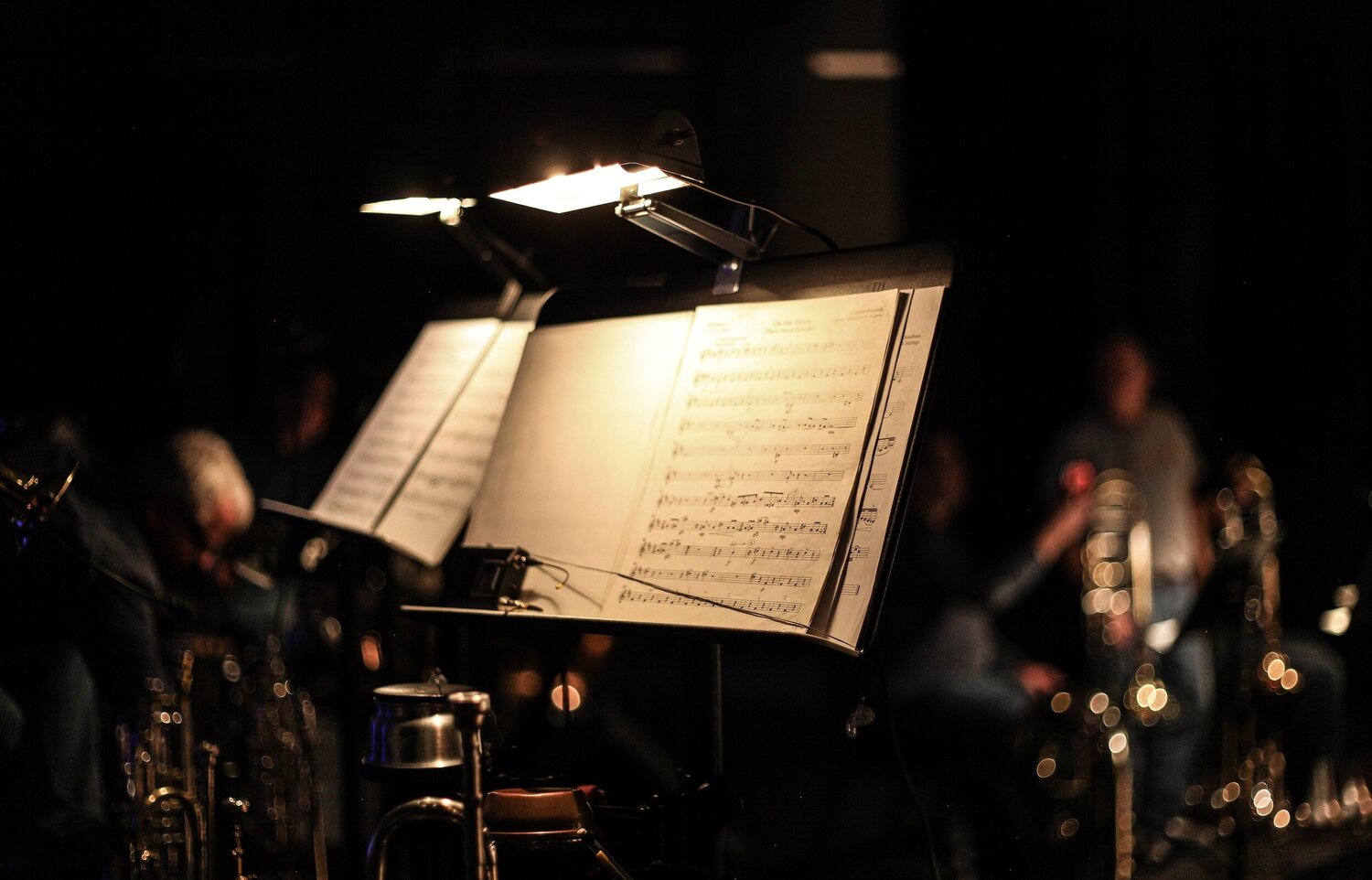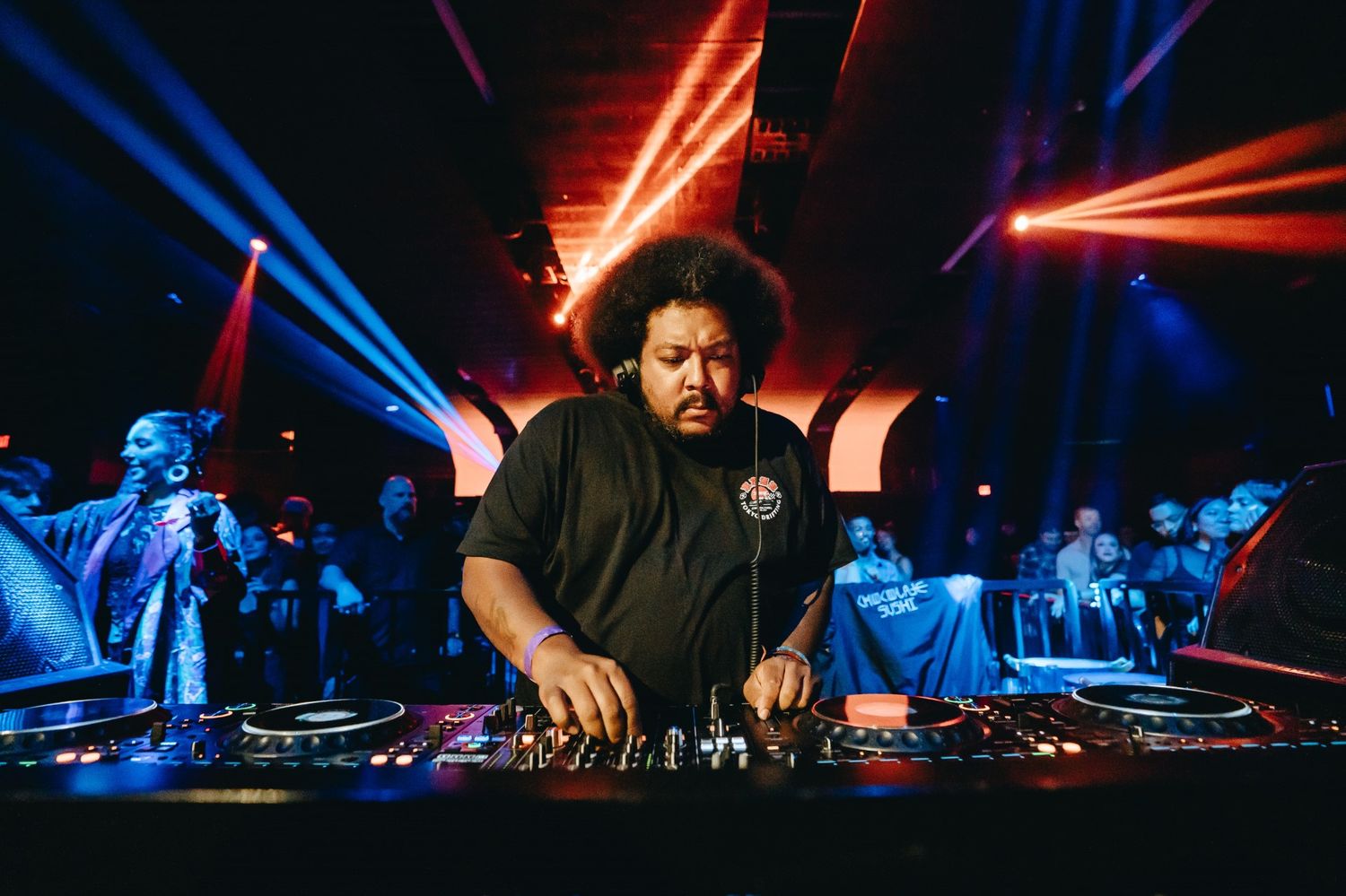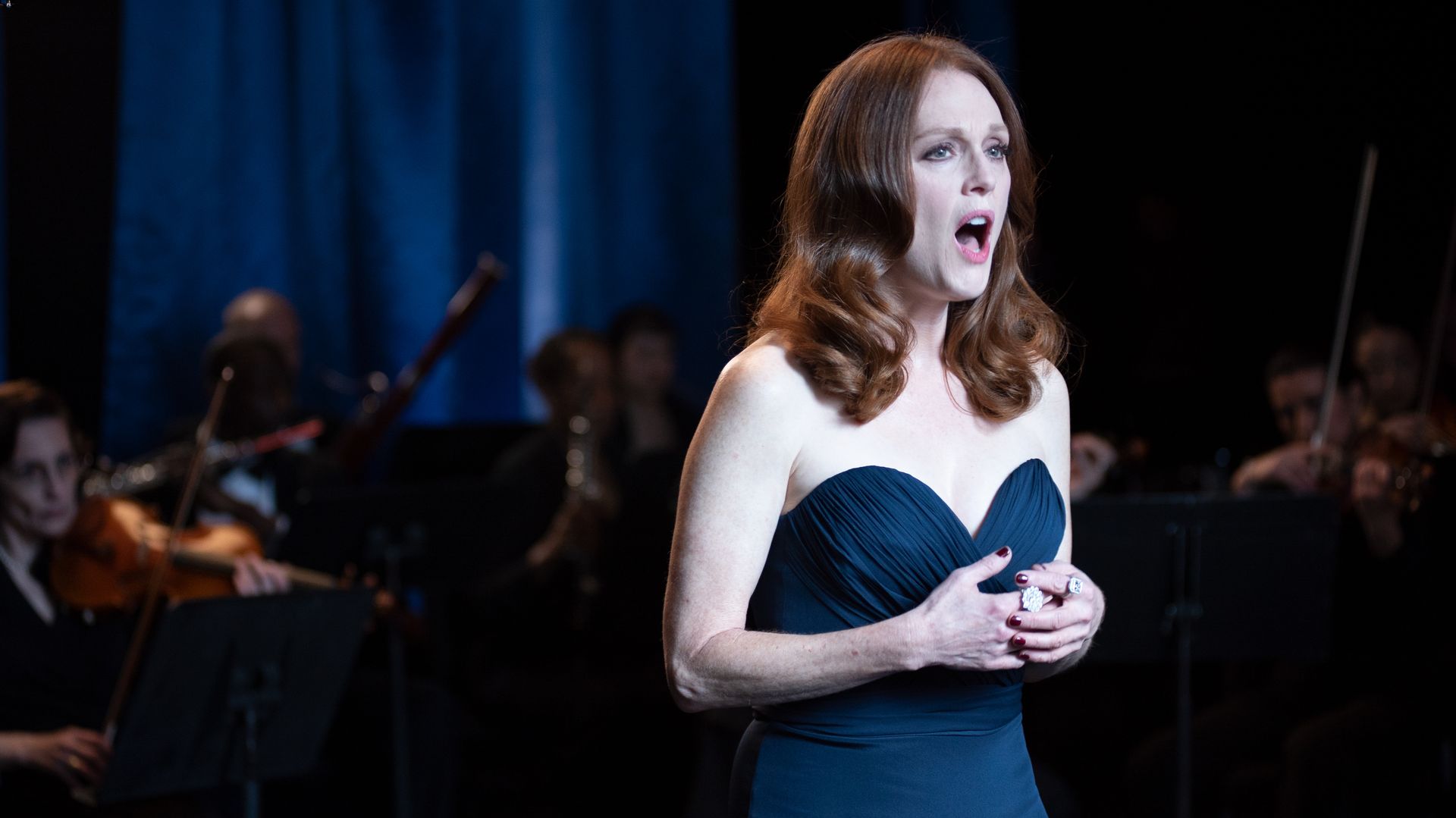Home>Production & Technology>Orchestra>How Do You Get Into An Orchestra


Orchestra
How Do You Get Into An Orchestra
Published: February 24, 2024
Discover how to join an orchestra and pursue your passion for music. Learn about auditions, requirements, and the path to becoming an orchestra member.
(Many of the links in this article redirect to a specific reviewed product. Your purchase of these products through affiliate links helps to generate commission for AudioLover.com, at no extra cost. Learn more)
Table of Contents
Introduction
Entering the world of orchestral music is a dream for many aspiring musicians. The allure of performing in a grand concert hall, surrounded by talented musicians and captivating audiences, is a powerful draw. However, the path to joining an orchestra is not without its challenges. It requires dedication, talent, and a strategic approach to navigate the competitive landscape of the classical music industry.
Becoming a member of an orchestra is a significant achievement that often represents the culmination of years of hard work and perseverance. It is a journey that demands a combination of musical skill, professional networking, and unwavering determination.
In this article, we will explore the multifaceted process of gaining entry into an orchestra. From the essential education and training required to the intricacies of auditions and applications, we will delve into the various components that contribute to a successful orchestral career. Additionally, we will discuss the importance of networking and building connections within the music community, as well as the value of gaining professional experience in diverse musical settings.
Join me as we embark on a comprehensive exploration of the steps and strategies involved in pursuing a career in an orchestra. Whether you are a budding musician with aspirations of performing in a renowned symphony or a music enthusiast curious about the inner workings of the orchestral world, this article will provide valuable insights into the fascinating journey of entering the realm of orchestral music.
Education and Training
Education and training form the bedrock of a successful orchestral career, laying the foundation for musical excellence and professional development. Aspiring orchestral musicians typically embark on their journey by immersing themselves in rigorous and comprehensive musical education. This often begins at a young age, with many musicians starting formal training in their chosen instrument during childhood or adolescence.
A solid education in music theory, history, and performance is essential for aspiring orchestral musicians. This encompasses a deep understanding of musical notation, composition, and the historical context of classical music. Many individuals pursue formal education at conservatories, universities, or music schools, where they receive specialized training from experienced faculty members and exposure to a diverse repertoire of musical works.
In addition to academic study, practical training through private lessons, masterclasses, and ensemble participation is crucial for honing technical proficiency and musical expression. Mastering an instrument to the highest standard requires countless hours of dedicated practice, often under the guidance of esteemed instructors who provide mentorship and constructive feedback.
Furthermore, participation in youth orchestras, community ensembles, and chamber groups offers valuable performance experience and the opportunity to collaborate with peers in a musical setting. These experiences not only foster ensemble skills and stage presence but also cultivate a deep appreciation for the collaborative nature of orchestral music.
As musicians progress in their education and training, they often seek opportunities to perform in solo recitals, competitions, and music festivals, showcasing their artistry and dedication to their craft. These experiences contribute to the development of a well-rounded musician, capable of meeting the demands of a professional orchestral career.
Ultimately, a comprehensive education and training regimen equips aspiring orchestral musicians with the technical prowess, interpretive skills, and artistic sensibility necessary to excel in the competitive landscape of orchestral music. It instills a deep understanding of musical traditions and a commitment to musical excellence, preparing individuals to pursue their aspirations of contributing to the rich tapestry of orchestral performance.
Auditions and Applications
Auditions serve as the gateway to securing a coveted position within an orchestra, representing a pivotal moment in the pursuit of a professional orchestral career. These highly competitive and meticulously orchestrated events require meticulous preparation, unwavering confidence, and a profound understanding of the intricacies of the audition process.
Preparation for orchestral auditions often begins long before the actual event, with aspiring musicians dedicating countless hours to refining their technical skills, musical interpretation, and stage presence. This rigorous preparation involves mastering a diverse repertoire of orchestral excerpts, which are selected from prominent symphonic works and serve as the benchmark for evaluating a musician's proficiency and artistry.
In addition to technical mastery, musicians must also cultivate a deep understanding of the stylistic nuances and historical context of the repertoire, enabling them to deliver compelling and authentic performances during the audition process. This demands a meticulous study of the scores, insightful musical interpretation, and the ability to convey a profound connection to the music through their playing.
The application process for orchestral auditions often involves submitting a comprehensive portfolio, which may include a detailed resume, professional references, recordings of solo and orchestral performances, and a personal statement outlining the musician's artistic vision and career aspirations. This portfolio serves as a testament to the musician's capabilities and provides the audition panel with valuable insights into the individual's musical journey and achievements.
On the day of the audition, musicians are faced with the daunting task of performing in front of a panel of distinguished judges, often comprising the orchestra's principal players, conductors, and artistic administrators. The pressure is palpable as each musician strives to deliver a flawless and compelling performance that captures the attention and admiration of the audition panel.
The audition itself is a meticulous and structured process, typically consisting of multiple rounds that progressively narrow down the pool of candidates. Each round presents unique challenges, requiring musicians to demonstrate their technical prowess, musical sensitivity, and adaptability to different musical styles and tempos. The ability to showcase versatility and artistry while maintaining composure under pressure is paramount to succeeding in the highly competitive environment of orchestral auditions.
Ultimately, successful navigation of the audition process culminates in the opportunity to join the ranks of a prestigious orchestra, marking the realization of a musician's aspirations and the beginning of a fulfilling and impactful career in orchestral music. The journey from preparing meticulously for auditions to securing a coveted position in an orchestra is a testament to the unwavering dedication, perseverance, and artistic excellence that define the path of an orchestral musician.
Networking and Connections
Networking and building meaningful connections within the orchestral community play a pivotal role in shaping the trajectory of a musician's career. While technical proficiency and musical artistry are foundational elements, the power of networking lies in its ability to open doors, create opportunities, and foster collaborations that can propel a musician's journey to new heights.
At the heart of effective networking is the cultivation of genuine relationships with fellow musicians, conductors, artistic directors, and industry professionals. This involves active engagement in musical events, festivals, and workshops where musicians have the opportunity to connect with peers and establish rapport with influential figures in the orchestral world. These interactions not only facilitate the exchange of ideas and artistic insights but also lay the groundwork for potential collaborations and future career prospects.
Participation in chamber music ensembles, collaborative projects, and outreach initiatives provides valuable avenues for musicians to forge connections and showcase their artistry to a diverse audience. These experiences not only demonstrate a musician's versatility and adaptability but also serve as catalysts for building a robust network of colleagues and supporters who can advocate for their talent and professional endeavors.
Furthermore, attending orchestral concerts, masterclasses, and industry gatherings offers musicians the chance to engage with established professionals and gain valuable mentorship and guidance. Establishing a presence in the orchestral community through active participation and genuine enthusiasm for musical collaboration fosters a sense of camaraderie and mutual support, laying the groundwork for enduring professional relationships.
In the digital age, leveraging online platforms and social media to connect with fellow musicians and industry professionals has become increasingly important. Maintaining a strong and professional online presence through platforms such as LinkedIn, professional musician networks, and personal websites allows musicians to showcase their achievements, share their musical endeavors, and connect with a global network of like-minded individuals.
Ultimately, the cultivation of a robust network and meaningful connections within the orchestral community is not just about advancing one's career; it is about fostering a sense of community, mutual support, and artistic enrichment. The collaborative nature of orchestral music thrives on the synergy of talented individuals coming together to create transcendent musical experiences, and networking serves as the conduit through which these creative synergies are realized and celebrated.
In the orchestral world, the value of networking and connections extends far beyond professional opportunities; it embodies the spirit of artistic camaraderie, mentorship, and collective growth, enriching the musical landscape and shaping the future of orchestral performance.
Professional Experience
Professional experience serves as a cornerstone in the journey of an orchestral musician, providing invaluable opportunities for artistic growth, skill refinement, and the cultivation of a diverse musical palette. As musicians transition from the realm of academic study to the professional stage, they encounter a myriad of enriching experiences that shape their artistic identity and prepare them for the demands of a career in orchestral music.
Engaging in professional orchestral performances, whether as a member of a renowned symphony or as a freelance musician, offers a transformative platform for musicians to apply their skills in a real-world context. The collaborative dynamics of an orchestral setting foster a deep understanding of ensemble playing, orchestral repertoire, and the nuances of musical interpretation. Through these experiences, musicians refine their ability to synchronize with fellow performers, respond to the direction of conductors, and contribute to the collective artistry that defines orchestral performance.
Beyond traditional orchestral engagements, musicians often seek opportunities to participate in chamber music ensembles, contemporary music projects, and cross-disciplinary collaborations. These ventures not only expand their artistic horizons but also imbue them with a spirit of versatility and adaptability, essential qualities for thriving in the dynamic landscape of orchestral music.
Moreover, engaging in educational outreach programs, workshops, and community initiatives allows musicians to share their passion for music with diverse audiences and inspire the next generation of music enthusiasts. These experiences not only contribute to the cultural enrichment of communities but also foster a sense of purpose and fulfillment for musicians, reinforcing the profound impact of their craft beyond the concert hall.
Professional experience also encompasses the pursuit of solo opportunities, whether through concerto performances with orchestras or solo recitals in prestigious venues. These endeavors showcase a musician's individual artistry, technical prowess, and interpretive depth, elevating their profile within the classical music sphere and affirming their status as multifaceted performers.
Navigating the landscape of professional experience equips musicians with the adaptability, resilience, and artistic insight necessary to thrive in the ever-evolving world of orchestral music. Each performance, collaboration, and outreach endeavor contributes to the tapestry of a musician's professional journey, enriching their artistic narrative and shaping the trajectory of their orchestral career.
Conclusion
In conclusion, the path to entering an orchestra is a multifaceted journey that demands unwavering dedication, exceptional musical prowess, and a strategic approach to career development. From the foundational elements of education and training to the intricacies of auditions, networking, and professional experience, aspiring orchestral musicians navigate a dynamic landscape shaped by artistic excellence and collaborative spirit.
The pursuit of a career in orchestral music begins with a comprehensive education and training regimen that instills technical proficiency, artistic sensibility, and a deep understanding of musical traditions. This foundational preparation sets the stage for aspiring musicians to embark on the rigorous process of orchestral auditions, where they demonstrate their mastery of orchestral repertoire and musical interpretation. The culmination of successful auditions marks the gateway to securing a coveted position within a renowned orchestra, representing the realization of a musician's aspirations and the beginning of a fulfilling and impactful career in orchestral music.
Furthermore, the value of networking and building connections within the orchestral community cannot be overstated. Genuine relationships with fellow musicians, conductors, and industry professionals create opportunities for collaboration, mentorship, and professional growth. The synergy of networking fosters a sense of camaraderie and mutual support, enriching the musical landscape and shaping the future of orchestral performance.
Professional experience serves as a transformative platform for musicians to apply their skills in real-world contexts, refine their artistry, and contribute to the collective tapestry of orchestral performance. Engaging in orchestral performances, chamber music ensembles, educational outreach, and solo opportunities not only hones musicians' adaptability and resilience but also elevates their artistic narrative within the classical music sphere.
Ultimately, the journey of entering an orchestra is a testament to the unwavering dedication, artistic excellence, and collaborative spirit that define the path of an orchestral musician. It is a journey marked by triumphs, challenges, and profound artistic growth, culminating in the realization of a lifelong dream and the opportunity to contribute to the rich legacy of orchestral music.
Aspiring orchestral musicians embark on this extraordinary journey with a deep reverence for the craft, a commitment to musical excellence, and a profound desire to share their artistry with the world. Their unwavering dedication and artistic vision not only enrich the orchestral landscape but also inspire audiences, fellow musicians, and future generations, perpetuating the timeless allure and profound impact of orchestral music.











